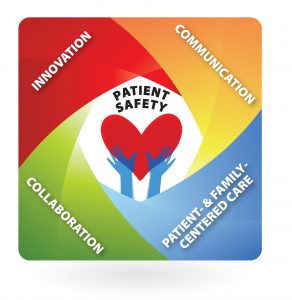As health economics gains ground as a tool for decision-making in the NHS, Marc Sansom talks to Jon Sussex about the impact of Payment by Results on the procurement of medical equipment.
In this pragmatic and secular age, the UK may no longer be a global vanguard of intellectual thought. But in many countries, it still provides a beacon for others to follow. For Jon Sussex working at the Office of Health Economics (OHE), where he is deputy director, it is not about breaking new ground. His concern is to improve people’s awareness and understanding about a discipline that is becoming increasingly influential in rational decision-making across the UK’s health services.
Founded in 1962, the OHE has an international reputation of some repute. Its close links with the Association of British Pharmaceutical Industry, which owns the organisation, often precludes the organisation from addressing certain issues, because as Sussex explains, people just wouldn’t believe the objectivity of what we were saying. But as it increasingly looks to attract funding from non-ABPI source’s presently 30% of funds are externally-generated by the OHE it’s ability to straddle the world of government, commerce and academia, combined with its peer-reviewed approach, positions the OHE well for the future.
PbR evaluation
One current, albeit modest, source of funding is from the Department of Health (DoH), which has contracted Aberdeen University and the OHE as a sub-contractor to jointly perform a national evaluation of Payment by Results (PbR), a controversial new policy that is dramatically changing the way that hospitals are funded.
Responsible for qualitative and advisory aspects of the project, with Aberdeen doing most of the number-crunching quantitative element, the two and a half year contract has been running for several months and, as Sussex explain’s, require’s feedback along the way to allow the government to adjust, nudge and steer the policy over the 2-3 year roll-out period.
The fundamental principle of PbR is to reward hospital trusts in England for the work that they do, thereby enabling the money to follow the patient’s and improve productivity. Its implementation, however, is fraught with difficulties. The OHE’s main objective, says Sussex, is to generate ideas about what the issues are, identify the good and the bad things about the policy, suggest solutions and propogate good practice. But will PbR improve care to patients? And will it enable them to benefit from new treatments and the latest in medical technology?
At a superficial level, says Sussex, it’s likely that by paying hospitals for each additional item of work they do, they will improve their activity levels and will see more patients. This will mean they will need more of everything, including equipment and supplies’.
Cost-effective incentive
However, says Sussex, PbR also provides an incentive to do the extra work at as low a cost as possible. The price that the hospital is paid is a nationally fixed tariff. So the lower the cost of the treatment, the greater is the hospital’s surplus to spend on other activities. I’m not saying it would, but it is feasible that the hospital may cut its future equipment costs to generate a surplus or to come below the tariff if it is a high cost trust.
So if you are a clinician or a procurement manager, PbR may increase the pressure from the finance director to go for the cheap option rather than the most cost-effective one.
Sussex identifies a number of factors that could lead to a squeeze on the procurement of medical technology. He links the first to the fact that the price of each activity is fixed centrally and is an average price for health service activity two years ago. A hospital is performing surgery at a fixed price of 1,000 but then a new technology that improves patient outcomes is supplied to the market at 1,100.
The supplier, however, must be able to demonstrate to the hospital that it will save money on the overall treatment by the patient leaving hospital sooner, because the extra cost will not feed into the tariff for another two years.
Recognising this as a disincentive for trusts to adopt new technologies, the DoH has introduced a mechanism for passing through the costs of new drugs or technology. Citing the hassle factor Sussex is concerned, however, that the option of negotiating the pass-through of the costs of a new technology may not be exercised. Negotiating the level of costs to be passed through will encroach on management and clinical time, when a tariff already exists’.
PbR is more or less based on average cost and Sussex is also concerned that during the phasing-in period this will create a financial imbalance. The trusts that are below average cost are being paid more by the primary care trusts for doing the same work. High cost hospital trusts, however, are under obligation to bring their costs down to the tariff price. But they can’t do it overnight. It is easy to pay low cost trusts more. But it is much harder to extract cost savings from the high cost trusts, so nationally money will be tight and that will impact on the procurement budget. Politicians say they will be ruthless and let high cost services close but will they?
The final factor, says Sussex, is that major financial changes such as PbR will create an atmosphere of fear, uncertainty and gloom. PbR is creating financial risks in trusts that didn’t exist before. Trusts do not know how much money they are going to be paid. Finance directors will, therefore, be holding money in contingency reserves, reinforcing the feeling that money is tight. The concern is that there may be a price to pay if trusts are averse to buying new technologies until the uncertainty has been reduced.

